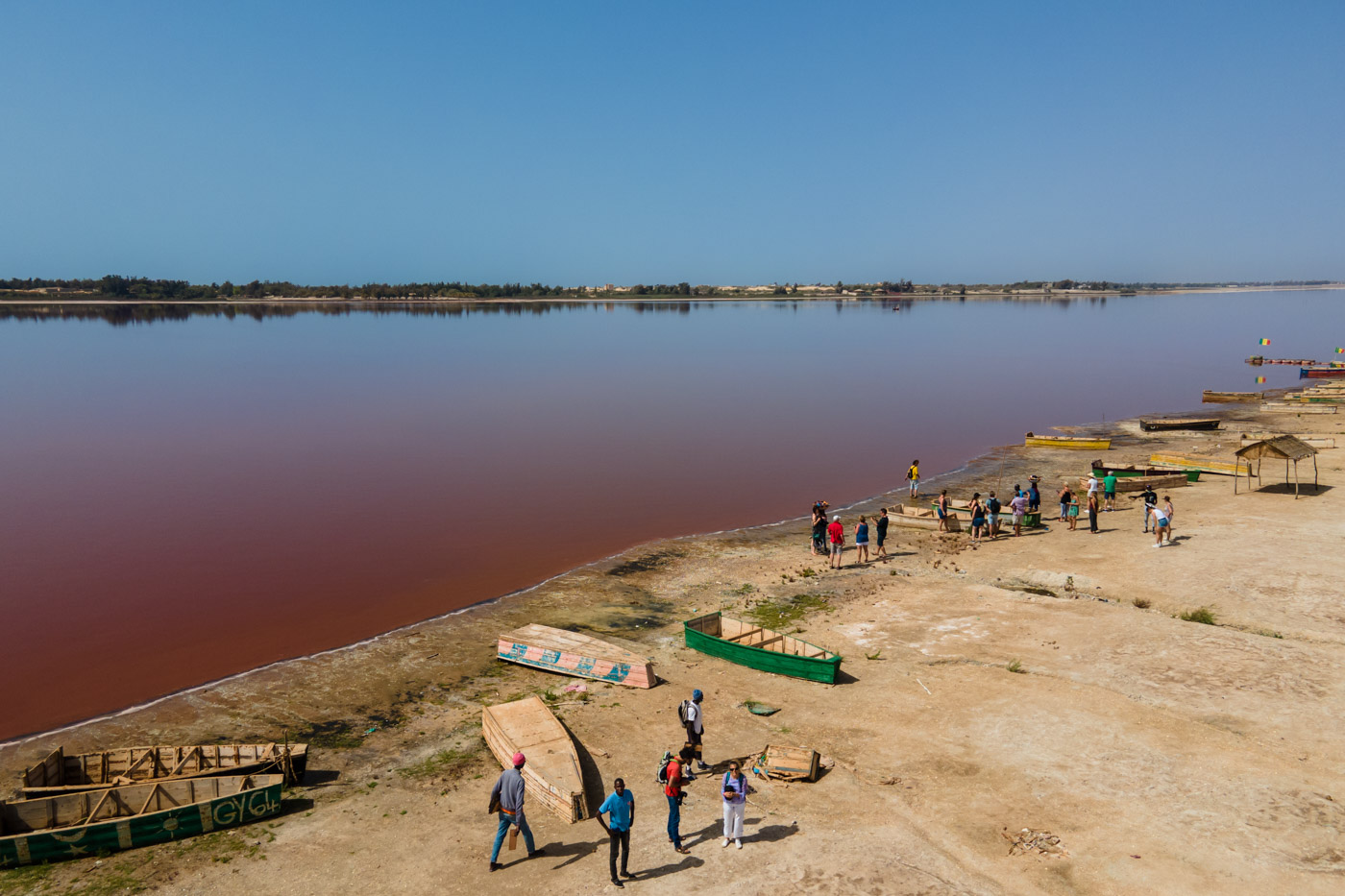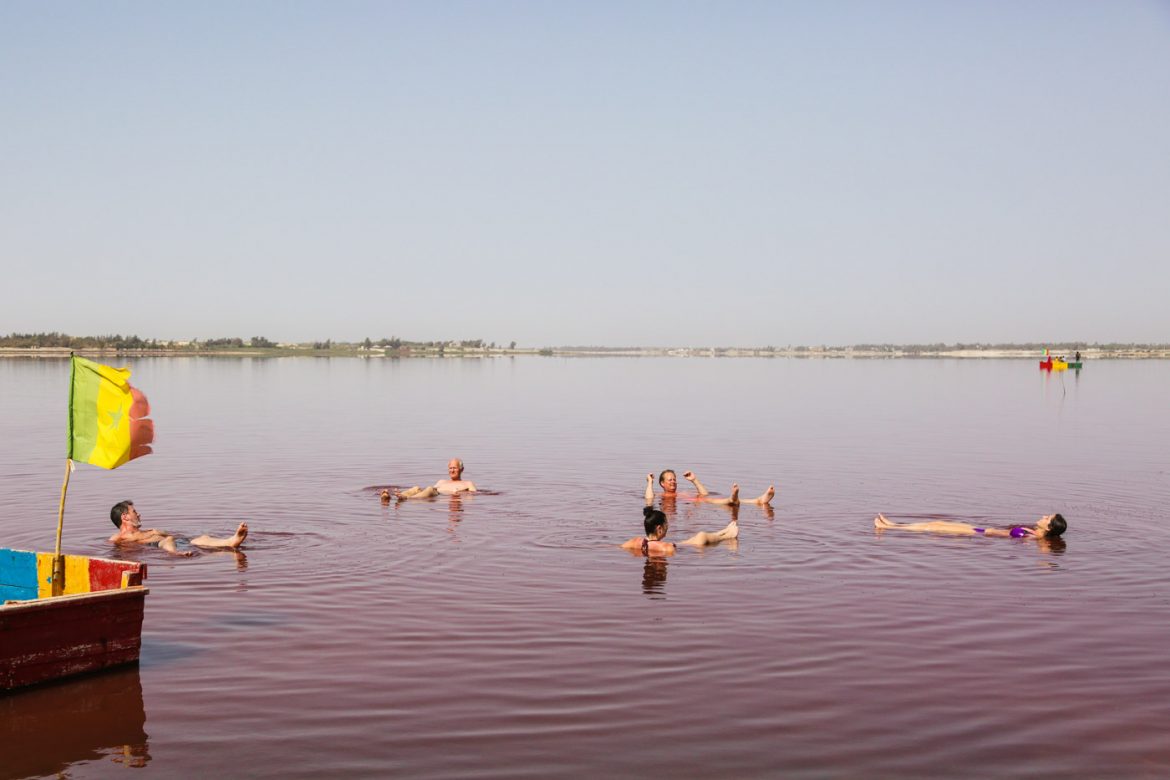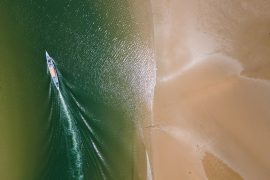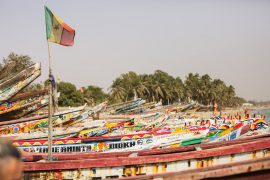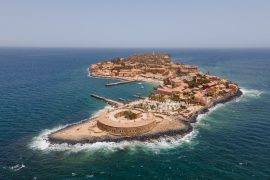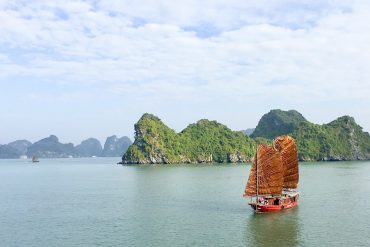The idea of visiting a pink lake is alluring! Let’s be honest how many pink lakes have we ever seen? When we read about lake Retba, and when we read about it being pink, we got curious immediately. The first photos of the lake that we saw online, looked strange somehow. After a careful scrutiny, we realised that many of them had been manipulated in post-production, with an artificial adjustment of the colour, in order to turn the lake… pink, or in many cases to turn it purple. After reading a bit about the lake we figured out why people were doing it.
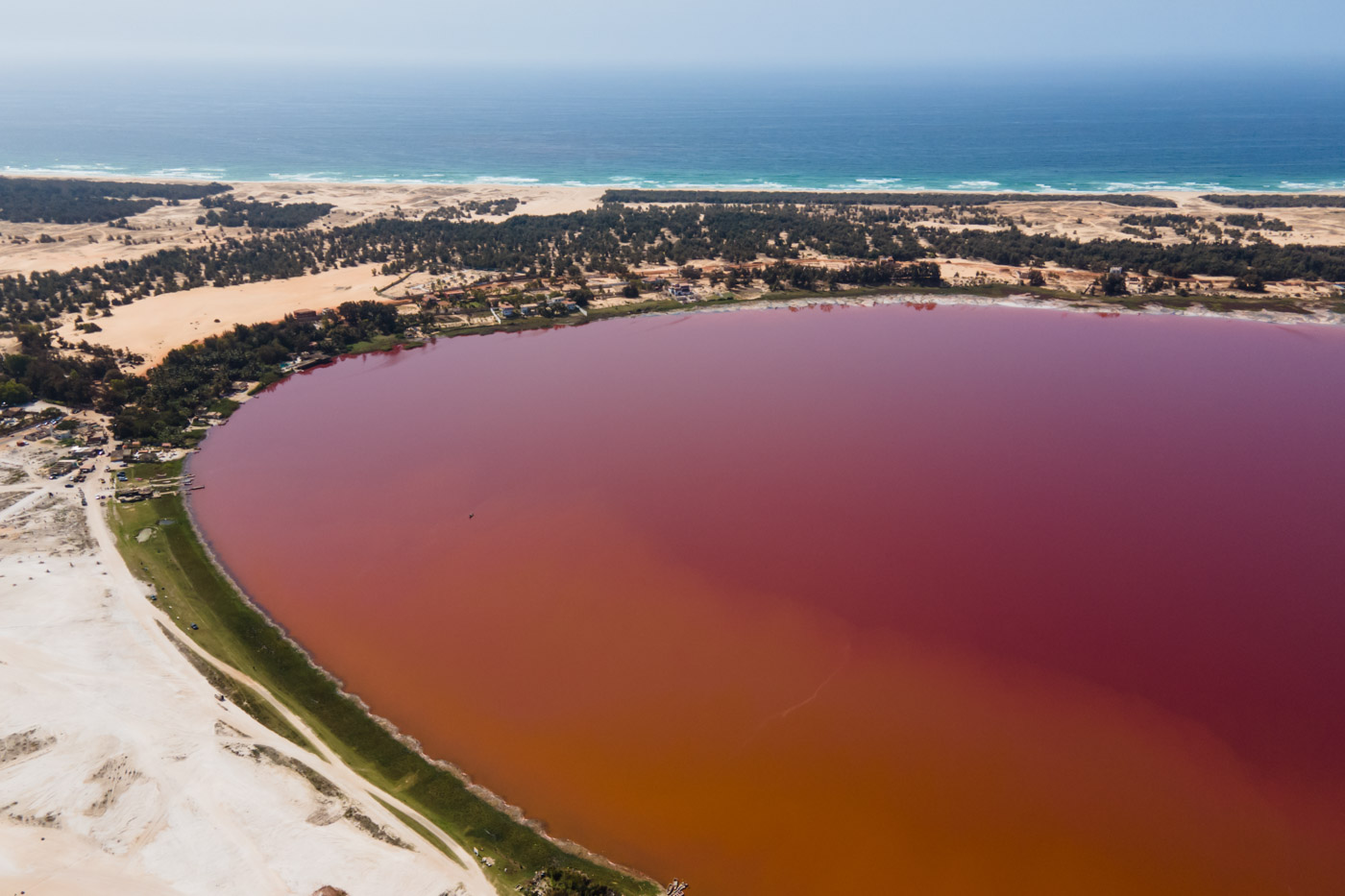
Lake Retba is located about 30 kilometres northeast from Dakar. It is usually called the ‘rose lake’ because of its pigmentation caused by the presence of an algae called the Dunaliella salina. This algae produces a red pigment that gives the water of the lake an ochre colour. Together with the high salinity of the lake, and in certain seasons, when the algae is more active, and the sun hits the water at a certain time of the day, and if there is no wind so that the surface of the lake looks like a mirror, the ochre turns into a lovely pink.
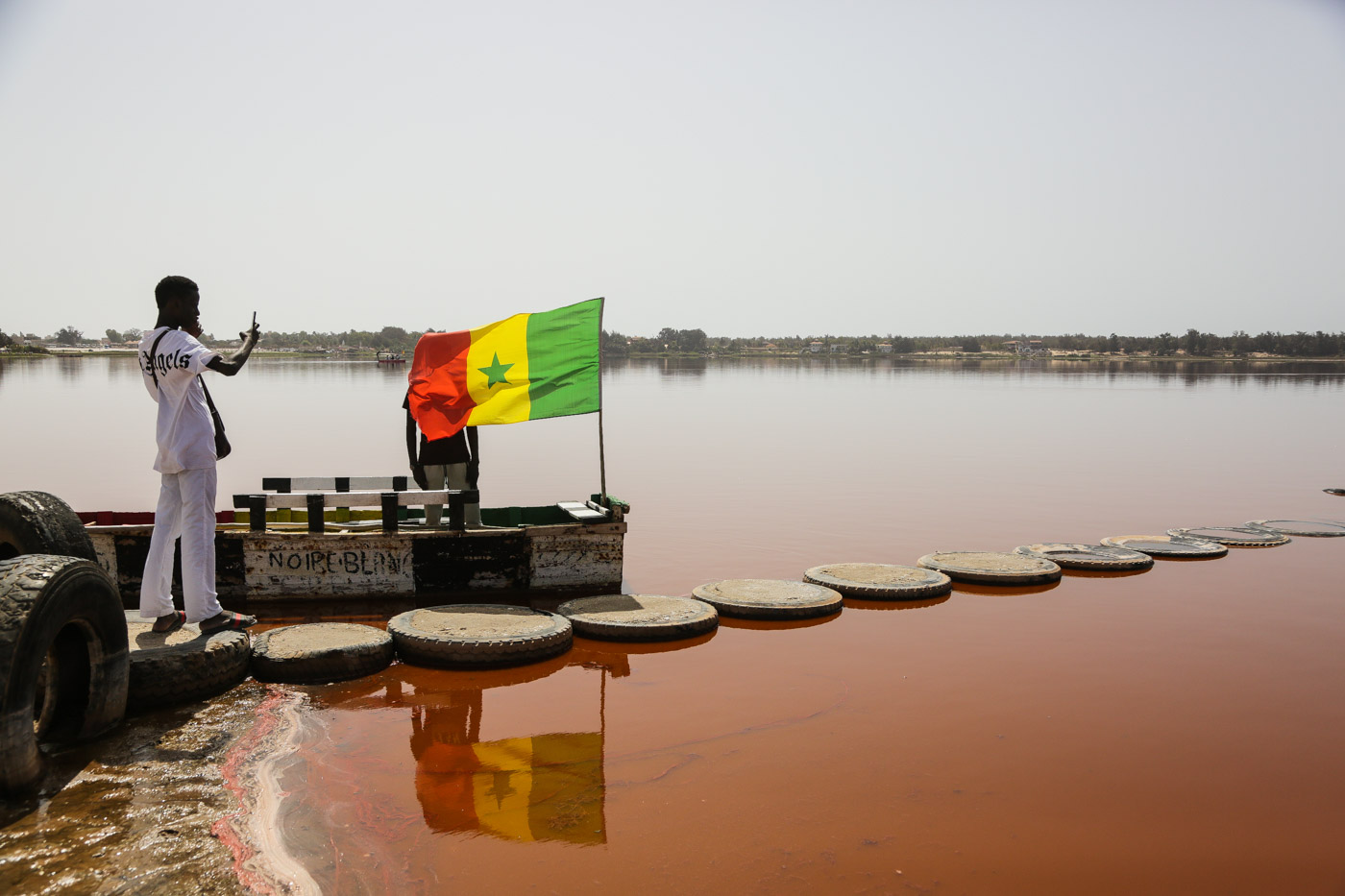
This means that only under certain (rare) circumstances does the lake actually look pink. As these circumstances are rare, most people never get to see the lake at its pinkest, therefore some travellers – perhaps disappointed in what they saw – manipulate the colours of their photos to show the desired pink, even though that is not what they saw! Well, what to say about that?
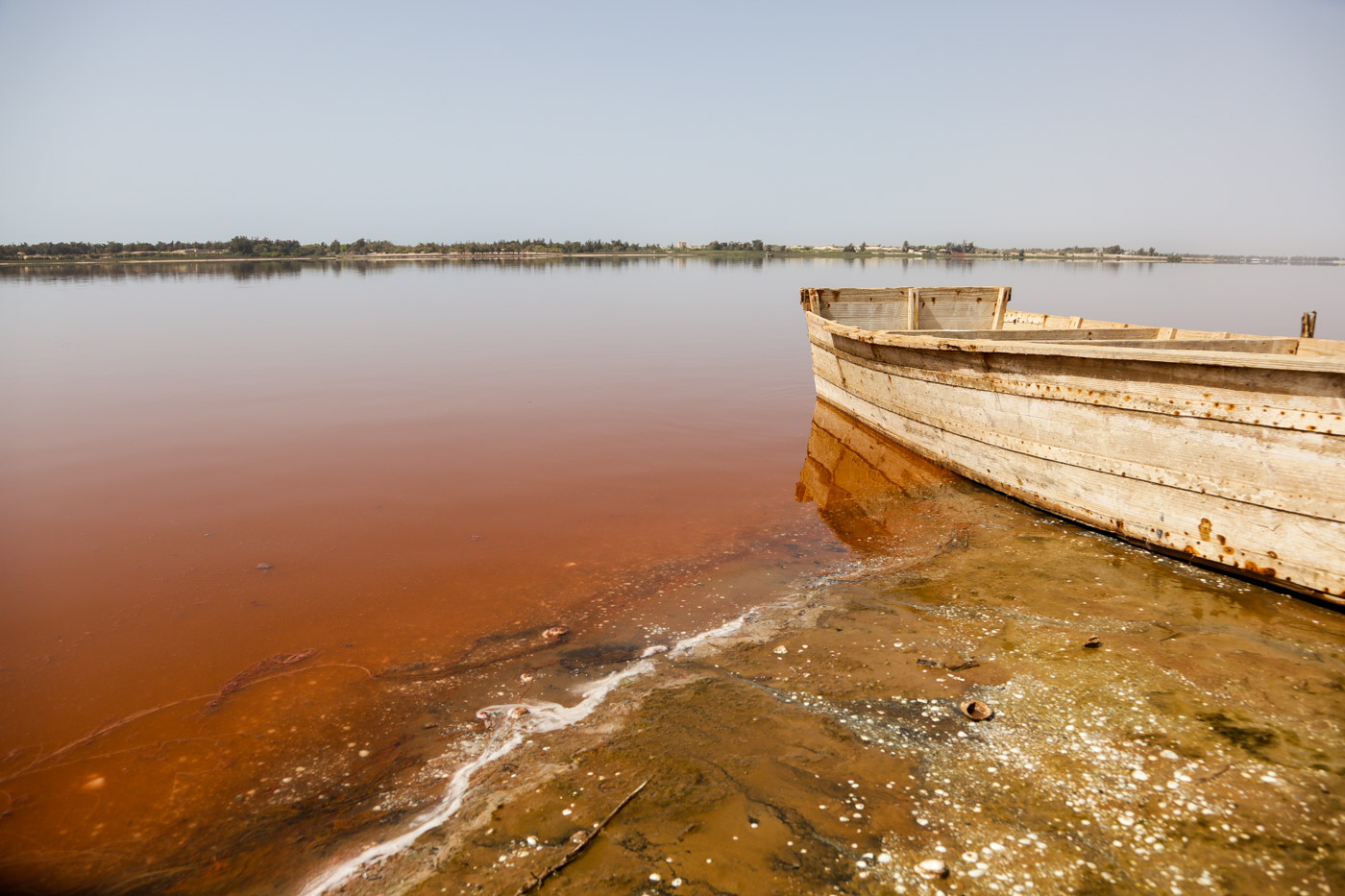
From what we heard Senegalese say, the time of the year when those circumstances are more favourable for the lake to turn pink is in January. So, if you would really like to see the lake dressed in pink, plan your visit to January. It doesn’t mean you will see it pink, it only means you are increasing the chances of seeing it in pink. At the time of our visit (in May), ochre was all that we got to see, but we must say, we found it beautiful enough not to have to play with split toning or saturation.
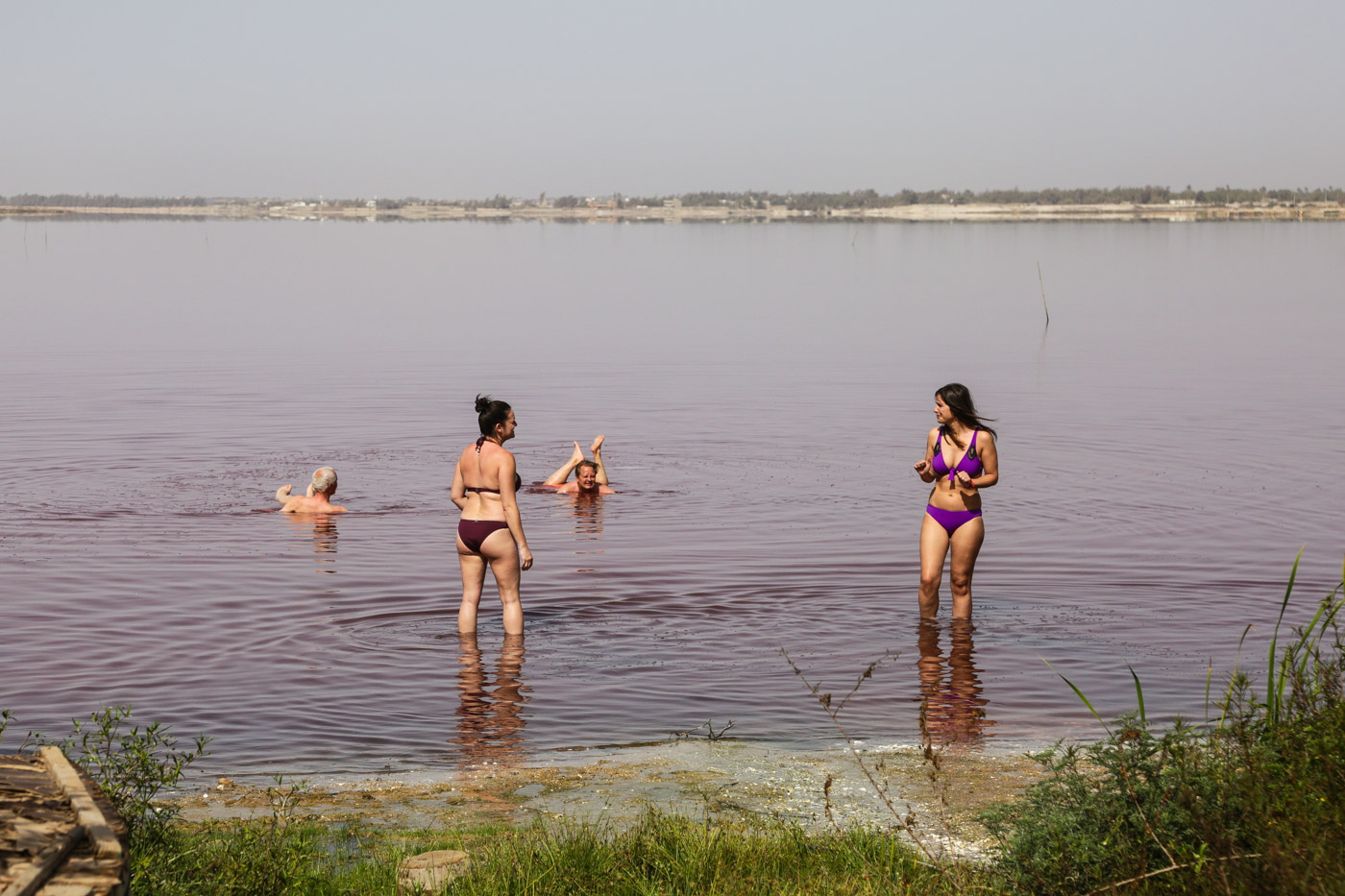
Colours aside, a visit to the lake has another draw: The water of the lake has a salinity of about 40%, which is more than the salinity of the Dead Sea. As such, it is practically impossible to swim in these waters. The maximum that people manage to do is float. And this really is a funny experience. We didn’t come prepared with swim gear, so we had to pass the experience, though.
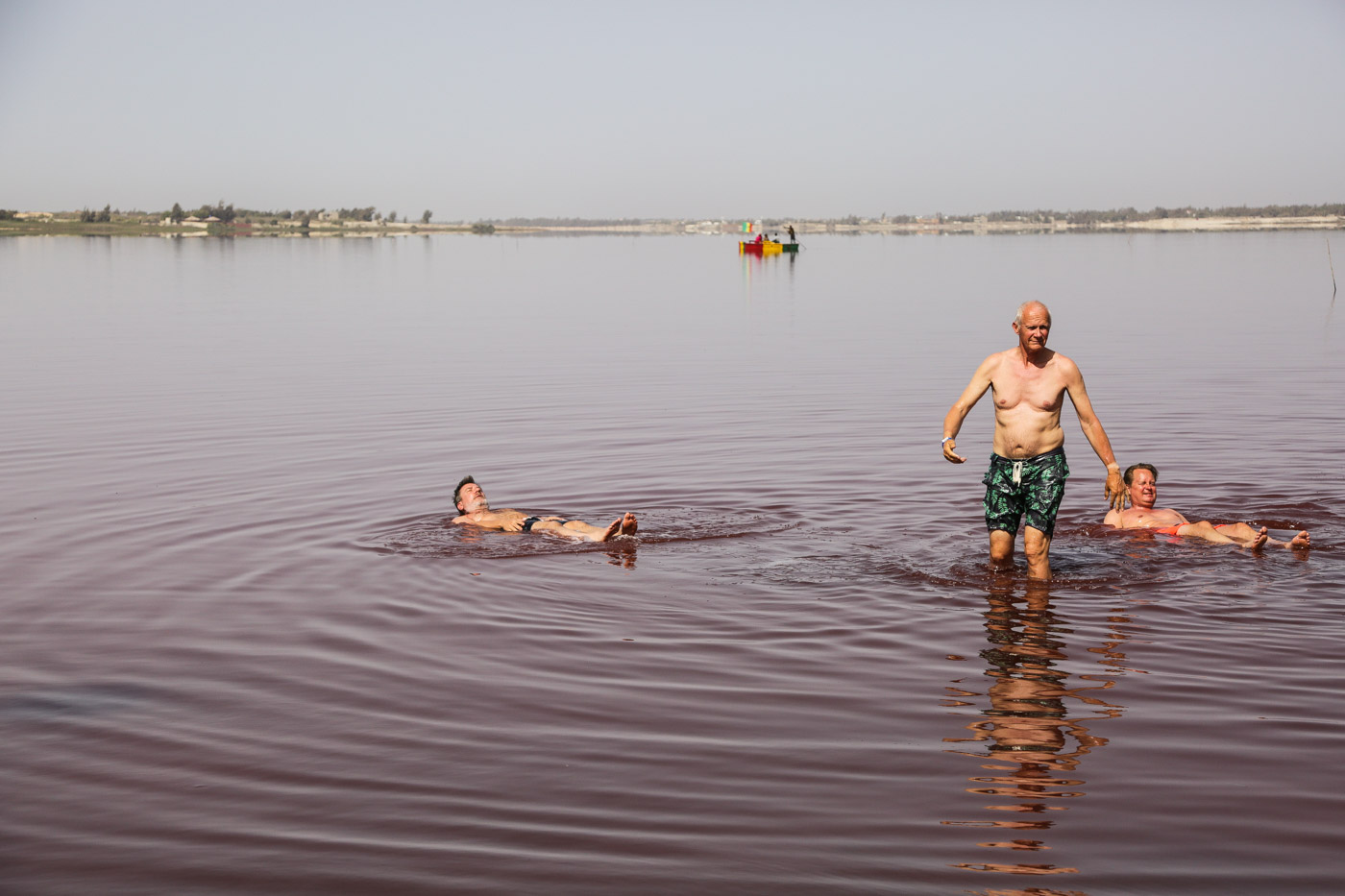
But, many others were prepared for it and enjoyed the moment. Near the souvenir stalls there is also a source of fresh water, ideal to have a quick shower after the floating, just to make sure you won’t spend the rest of the day with all the salt on your skin. That is not dangerous, it is only uncomfortable, and itchy.
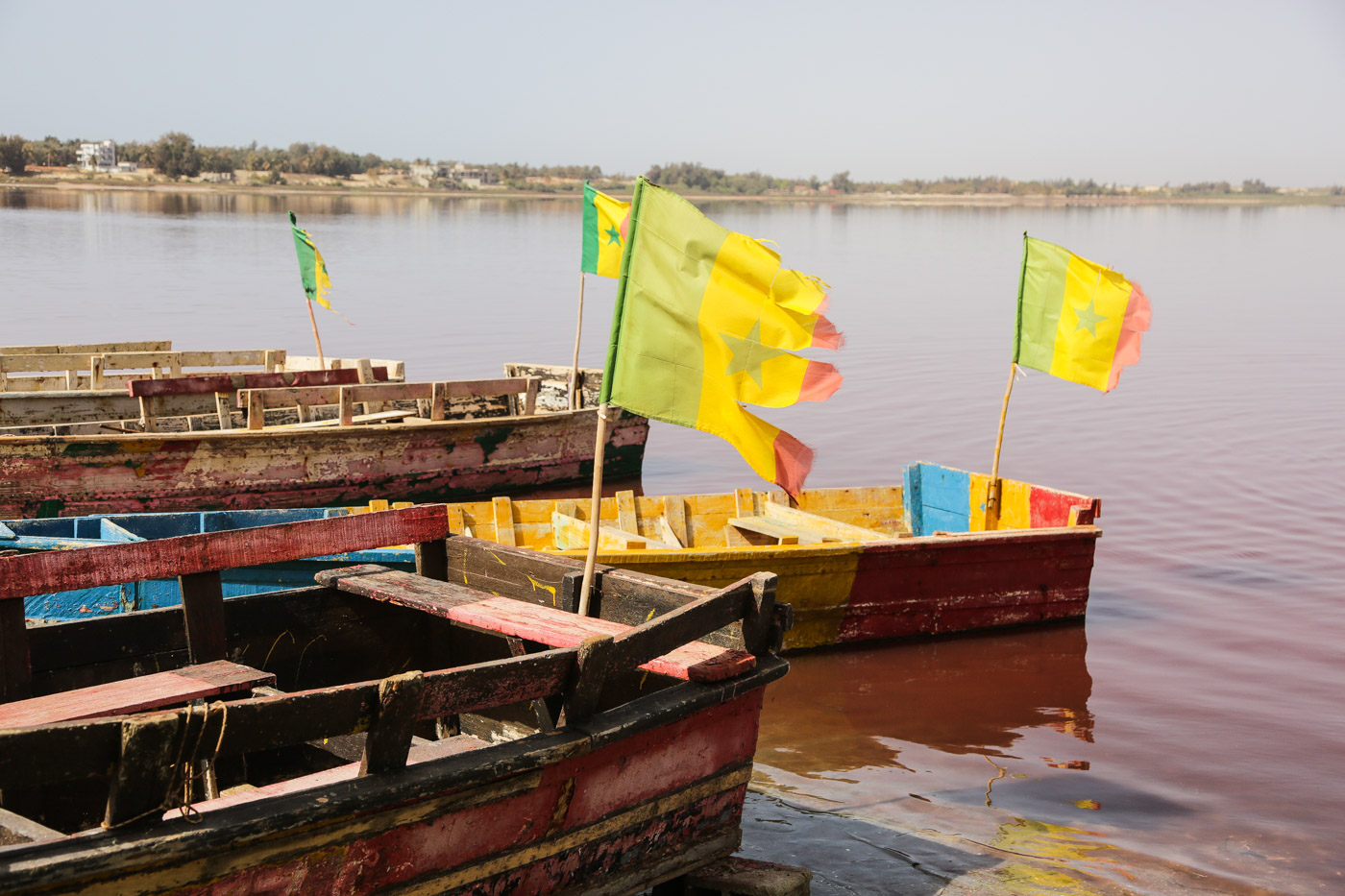
Wherever there is high concentrations of salt, there is also extraction of this mineral for several uses. In the Retba lake, extraction of salt still remains a very artisanal job. By the time of our visit, there were no workers at the lake (bad luck or pure bad planning?).
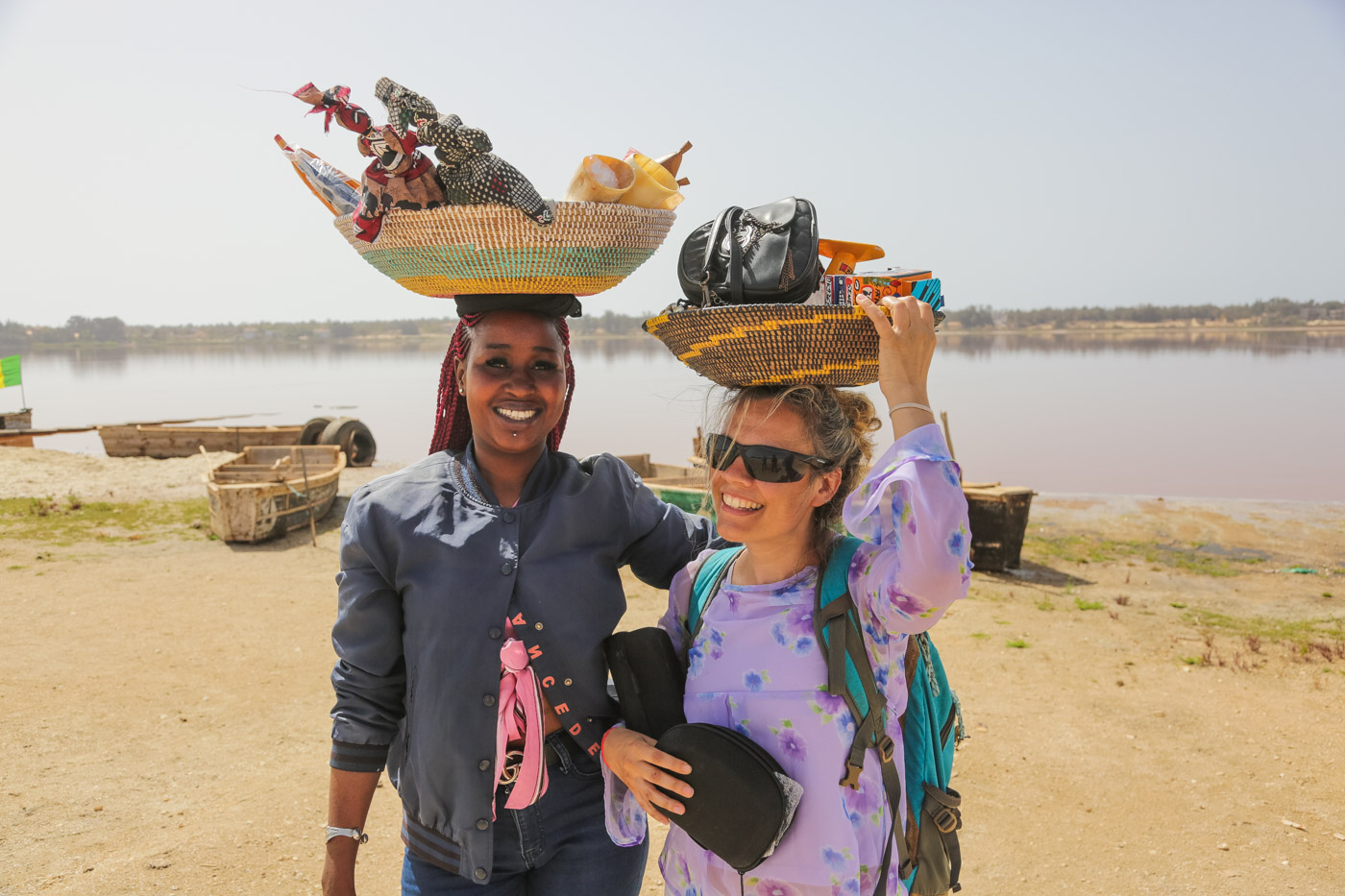
The only people who we saw there, were the many (too many) sellers, who approached us as soon as we arrived. Given the reduced number of tourism nowadays (we are still slowly getting out of the pandemic), these sellers were eager to sell us something. They do have some nice souvenirs, things we hadn’t seen in other places, so you may consider doing your souvenir shopping with them.
